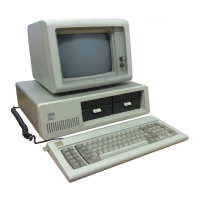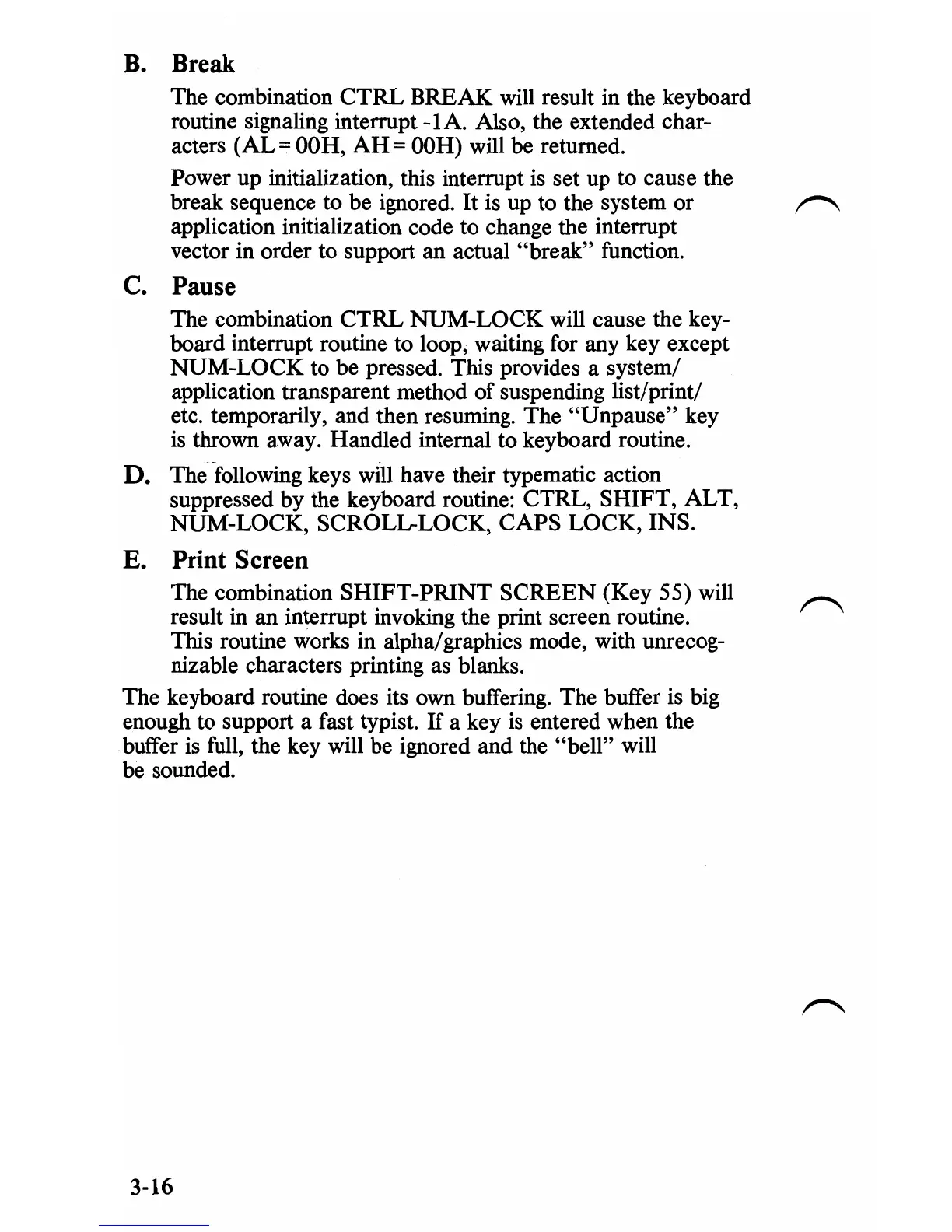B.
Break
The combination
CTRL
BREAK
will result in the keyboard
routine signaling interrupt -lAo Also, the extended char-
acters
(AL
=
DOH,
AH
=
DOH)
will be returned.
Power
up
initialization, this interrupt
is
set up to cause the
break sequence to be ignored.
It
is up to the system
or
r'"
application initialization code to change the interrupt
vector in order to support an actual
"break"
function.
C.
Pause
The combination
CTRL
NUM-LOCK
will cause the key-
board interrupt routine to loop, waiting for any key except
NUM-LOCK
to be pressed. This provides a system/
application transparent method
of
suspending list/print/
etc. temporarily, and then resuming. The
"Unpause"
key
is
thrown away. Handled internal to keyboard routine.
D. The following keys will have their typematic action
suppressed by the keyboard routine:
CTRL,
SHIFT,
ALT,
NUM-LOCK,
SCROLL-LOCK,
CAPS
LOCK,
INS.
E. Print Screen
The combination
SHIFT-PRINT
SCREEN
(Key
55) will
result in an interrupt invoking the print screen routine.
This routine works in alpha/graphics mode, with unrecog-
nizable characters printing as blanks.
The keyboard routine does its own buffering. The buffer is big
enough to support a fast typist.
If
a key is entered when the
buffer
is
full, the key will be ignored and the
"bell"
will
be sounded.
3-16

